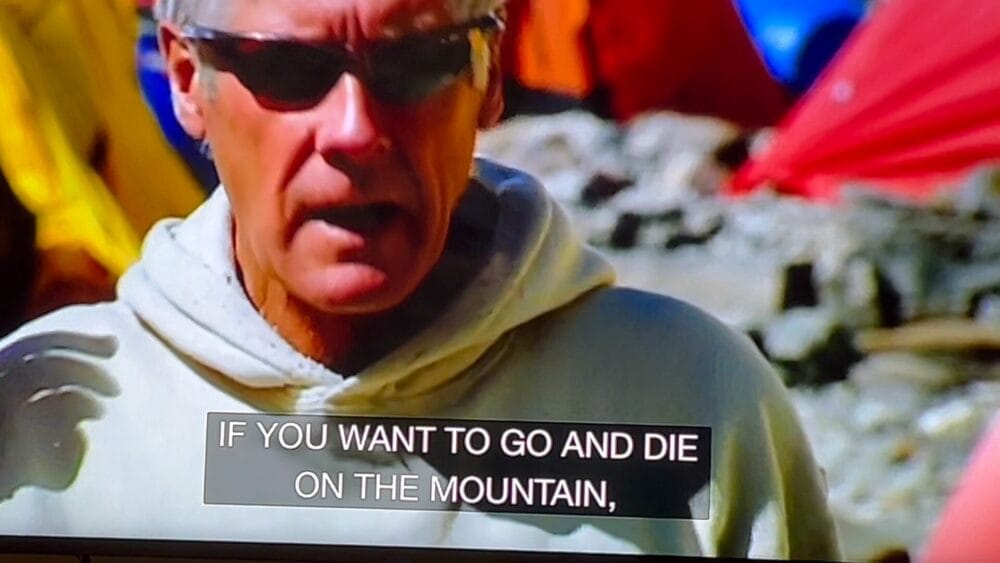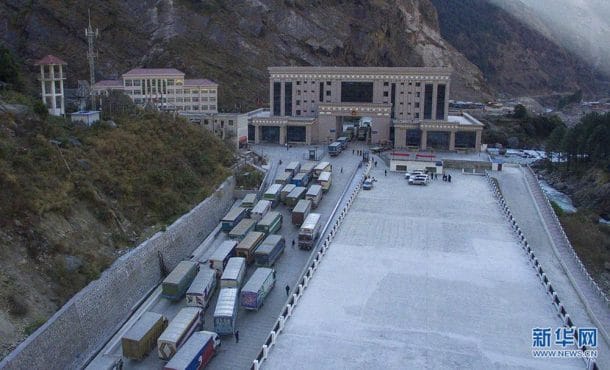We continue to see preventable deaths on the 8000-meter mountains. In this article, I’ll explore how they can be safely climbed while minimizing but never eliminating the risk of injury or death. Selecting the best guide for you is key to success in the mountains, but picking the best one can be daunting. To be clear, mountain climbing is dangerous whether you climb alone, with friends, are a sponsored professional or a client on a commercial team. If you don’t think you could die, you shouldn’t go.
Picking a guide comes down to five basic principles: experience, leadership, judgment, risk management and personal responsibility. Let’s break them down.
Experience
In this entire discussion, everything starts with the climber. The best climbers go to an 8000er fully prepared—physically, emotionally, mentally and with the right attitude. You gain these attributes through climbing lesser peaks over the years, slowly gaining the needed skills and appreciation for the challenge of an 8000-meter mountain. The biggest sin a climber can commit is the sin of arrogance. This is where you underestimate the difficulty of climbing above 26,000 feet and overestimate your capability. This combination puts people in an intractable position on the mountain, where their lives become dependent on the generosity of others. Another way of saying this is the best climbers find that fragile balance between confidence and humility.
Also, being a good team member is important. Climbing the Seven Summits (CTSS) has a “No D*ckheads” policy where they say,
“We will only enroll climbers who we feel will be an asset to our team, and we regularly deny applicants. This selection is not necessarily about your resume, fitness, age, skill set or even your previous climbing experience (as we can work with you to create a custom plan to achieve your goals around these things). Instead, this criterion is based on your character and is designed to create a powerful, cohesive culture and a sense of belonging on all of our expeditions.”
Leadership and Organization
Many climbers use commercial teams to spread costs across many people. They depend on the guides’ experience to reach their goals and come home safely. The best guides will tightly vet their clients for ability, personality and attitude. The best guides will ask about a prospective client’s climbing experience. Most want to see success on 6,000 and 7,000-meter peaks before taking you on an 8000er.
The best guides have some type of accreditation, like the International Federation of Mountain Guides Association (IFMGA), Wilderness First Responder (WFR) certification and Avalanche Awareness training (AIARE). It can take years and thousands of dollars to achieve these levels. Aspiring IMGA guides invest at least ninety-four days with:
- 32 days of general mixed terrain (snow, ice, rock incl. seven days practical learning with supervisor)
- 32 days of ski/winter (e.g., ski mountaineering, off-piste, free-ride, mechanized uplift skiing, ski touring, etc., incl. seven days of practical learning with supervisor)
- 20 days of rock (alpinism, rescue, technical rock climbing)
- Seven days theory with theoretical units from different sectors (a maximum of 10 days will, however, be credited)
- Three days of country-specific training
The best guides will list their summit’s success on their website and seldom promote 100% success unless it’s based on how many people joined their team starting from base camp and summited, not those who left from the highest camp and summited. The best guides rarely see such a high rate because that suggests everything went perfectly, and even for the best guides, that’s rare.
The best guides have smaller teams. While small groups are less profitable, they often offer higher support and have staff with more robust experience and skills. Smaller teams often have tighter bonds and a more successful experience.
The best operators require that all guides use supplemental oxygen, no matter how strong they are, including the leader, with no exceptions. During the climb, they keep a base camp operation with constant radio communication with all climbers, clients, and staff. They receive daily weather forecasts from proven, credible sources.
The best guides separate personal from business climbing objectives. If a leader or a guide wants to climb the mountain for their personal goals, they should not be part of the commercial team and have no client responsibilities during the expedition. In 2019, Adrian Ballinger, founder and owner of Alpenglow Expeditions, climbed K2 without supplemental oxygen, not a guide but as a member of the Alpenglow team.
Almost everyone gets sick on an 8000-meter climb, some serious, others just a cold. The best guides have a doctor at base camp or access to qualified resources.
Modern-day expeditions require massive amounts of electricity to recharge mobile phones, power computers, video projectors, and other luxuries clients often expect. The best guides use solar panels to charge batteries and have gasoline-powered generators to use as backup, and even then, only sparingly. The best guides strictly adhere to Leave No Trace (LNT) principles and use Wag bags at all camps for solid human waste.
While most climbers never expect to be rescued, it happens as it did for me in 2015 when I, along with almost 200 other people, became trapped in the Western Cwm after the earthquake. The best guides require adequate evacuation and medical insurance. They have procedures with a well-staffed home team, hopefully in their city-based office with reliable communications, to coordinate activities between insurance companies, rescuers, families, and expedition leaders.
Judgment
Climbing an 8000er involves many decisions, with many choices, sometimes between bad and poor options. This decision-making responsibility lies with both the client and the guides. However, if money is exchanged, the guide is legally and morally responsible for managing the client. The best operators have a lawfully binding contract citing the guide has full authority over the expedition, including the right to cancel it if they believe the climbing is unsafe or the client is in danger.
The best operators don’t skip a rotation even if they feel the pressure of a closing weather window. Putting poorly acclimatized climbers high on an 8000er puts everyone at risk. If a climber develops pulmonary or cerebral edema, they must descend as quickly as possible, often requiring extra on-mountain resources. This takes resources away from other climbers and could put the entire team at risk. A growing trend is to pre-acclimatize at home using oxygen tents. This works, but the best guides usually include a smaller acclimatization peak before arriving at the 8000-meter one.
Risk Management
This is when guides earn their money. There are many factors to consider when climbing an 8000er, from snow conditions, weather, objective dangers, crowds, teamwork and more. Before committing to a summit push, the best guides consistently assess these factors, along with the health of individuals and their staff.
Recently, climbers have died in avalanches. The best operators have taken avalanche awareness training and know that significant new snow needs between one and three days in bright sunshine to bond to the current snow; otherwise, the risk of triggering an avalanche increases by climbing before the new snow bonds.
The best guides may tell clients they can no longer climb because they are too slow, unhealthy, or lack the required skills. I organized a climb to Broad Peak and only discovered once we were at Camp 1 that some climbers had lied on their application and lacked the fundamental skills to climb safely. This is partly why I never organized another expedition.
Personal Responsibility
Of all these areas discussed, this is the most important. People climb for unique and personal reasons. No one must justify why they climb to anyone. Mountain climbing is perhaps one of the last bastions of total freedom. If you want to climb a remote peak in Pakistan, you can probably go by just paying for a permit. However, this freedom has limits. When a guide is hired or you join a commercial team, you agree to follow a set of rules. The best guides tell you what these rules are upfront.
And the best guides have ample backup support if something goes wrong, but to count on that support to save your life is a severe miscalculation. Mountain rescues involve significant risk for the rescuers. They often climb under challenging conditions, on dangerous terrain, and with little understanding of what the rescue will entail. As Russell Brice said in an Everest Beyond the Limit episode, “There’s one Sherpa for each person. The Sherpa will stay with you, but if you want to go and die on the mountain, it’s not the Sherpa’s job to die with you.”
Today we see an uptick in climbers seeking to set records. While I firmly believe that everyone may climb for whatever reason is meaningful to them, some of these new records are not comparable to those they broke. And some feel like the risks outweigh the benefits. Jenn Drummond, who recently became the first and only woman to summit the Second Seven Summits, put it this way:
Those chasing summits, will always chase summits. You will never be satisfied if that is the only win, and that is a limited existence. I firmly believe in people over peaks. Be that climbing a mountain, building a company, or raising a family.
There are many excellent choices of guides for the 8000ers, and sometimes it’s overwhelming to determine which one is best for you. My best advice is to get references from someone similar to your profile: age, experience and goals, and to ask questions, especially the uncomfortable ones.
Climb On!
Alan
Memories are Everything
The Podcast on alanarnette.com
You can listen on Spotify, Apple, Google, Pocket Casts, RadioPublic, Anchor, and more. Search for “alan arnette” on your favorite podcast platform.
Summit Coach

If you dream of climbing mountains but are unsure how to start or reach your next level, from a Colorado 14er to Rainier, Everest, or even K2, we can help. Summit Coach is a consulting service that helps aspiring climbers worldwide achieve their goals through a personalized set of consulting services based on Alan Arnette’s 25 years of high-altitude mountain experience, including summits of Everest, K2, and Manaslu, and 30 years as a business executive.




